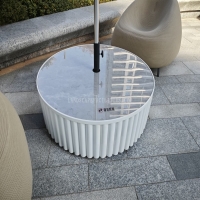Welcome to the website for landscape facilities products and knowledge.
How does the table’s design account for ease of access for maintenance or repairs?
Contemporary table design ingeniously incorporates maintenance accessibility as a fundamental principle rather than an afterthought. Many modern tables feature strategically placed removable panels that provide direct access to internal components without requiring complete disassembly. These access points are often designed with tool-free mechanisms—such as magnetic closures, quarter-turn fasteners, or sliding panels—that enable quick removal for inspection or repairs.
The structural framework of maintenance-conscious tables typically employs modular construction methods. Critical components like leg assemblies, electrical elements in smart tables, and support structures are designed as independent units that can be detached and serviced separately. This compartmentalized approach means that addressing one issue doesn't necessitate dismantling the entire table, significantly reducing repair time and complexity.
Designers frequently implement standardized connection systems that utilize common hardware sizes and types. This standardization ensures that replacement parts are readily available and that technicians can work with familiar tools. Additionally, many service-oriented table designs incorporate cable management systems with accessible channels and removable covers, facilitating straightforward wiring maintenance for tables with integrated power or data ports.
Material selection also plays a crucial role in maintenance accessibility. Designers often choose durable, scratch-resistant surfaces that can withstand repeated access panel removal, while selecting corrosion-resistant fasteners that maintain their integrity through multiple maintenance cycles. Some advanced designs even incorporate diagnostic features like transparent sections or indicator systems that help identify potential issues before they necessitate major repairs.
The ergonomics of maintenance have become equally important, with designers ensuring that serviceable components are positioned within comfortable reach rather than hidden in hard-to-access locations. This human-centered approach to maintenance design not only speeds up repair processes but also reduces the likelihood of accidental damage during service procedures, ultimately extending the table's functional lifespan while minimizing downtime.
Related search:

Recommendation
Round metal tube border design table with tempered glass or granite countertop on the top.